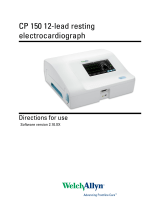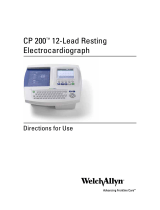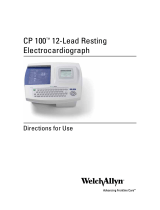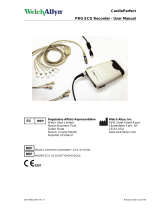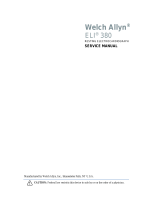
•Schedule periodic maintenance. You can use the service tool to set the service
interval for each maintained device.
•View and save logs. You can download and save log files from the device for
analysis to help diagnose and identify reported issues.
•Create user accounts. Administrators can create user accounts and set permission
levels to control access to the features, allowing one group to perform administrative
tasks and another to perform service tasks. Restricting access prevents the service
tool from being used to make unauthorized changes on a connected device.
•Perform functional verification. The service tool can be used to test the device to
ensure that it meets performance specifications.
•Recover devices. In the rare case where a device can no longer boot because of
corrupted firmware, the service tool can connect the device to Welch Allyn Technical
Support to reinstall the firmware.
•Extensible. The device accepts new plug-ins to support future Welch Allyn products.
Returning products
When returning a product to Welch Allyn for service, ensure that you have the following
information:
• Product name, model number, and serial number. This information may be found on
the product and serial number labels on the bottom of the device.
• A complete return shipping address.
• A contact name and phone number.
• Any special shipping instructions.
• A purchase-order number or credit-card number if the product is not covered by a
warranty.
• A full description of the problem or service request.
1. Contact Welch Allyn and request an RMA number.
Note Welch Allyn does not accept returned products without an
RMA.
2. Ship the device to Welch Allyn, observing these packing guidelines:
a. Remove from the package the battery, all hoses, connectors, cables, sensors,
power cords, and other ancillary products and equipment, except those items
that might be associated with the problem.
Recommendations for returning the Lithium Ion battery
• Use ground transportation to return batteries.
• If returning multiple batteries, package each battery individually.
• Do not consolidate multiple batteries in a single package.
• Use packaging provided by Welch Allyn or the battery manufacturer.
• Do not pack a defective battery in checked or carry-on baggage if traveling
by air.
Packaging
• If you return the battery with the device, remove the battery, seal the battery
in an antistatic plastic bag, and place the battery in the position reserved for
the battery in the original shipping carton near the device.
Service manual Overview 15





















